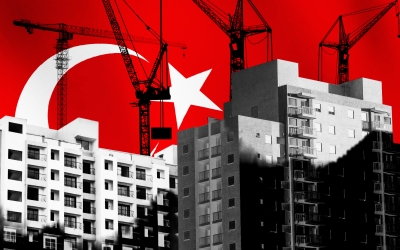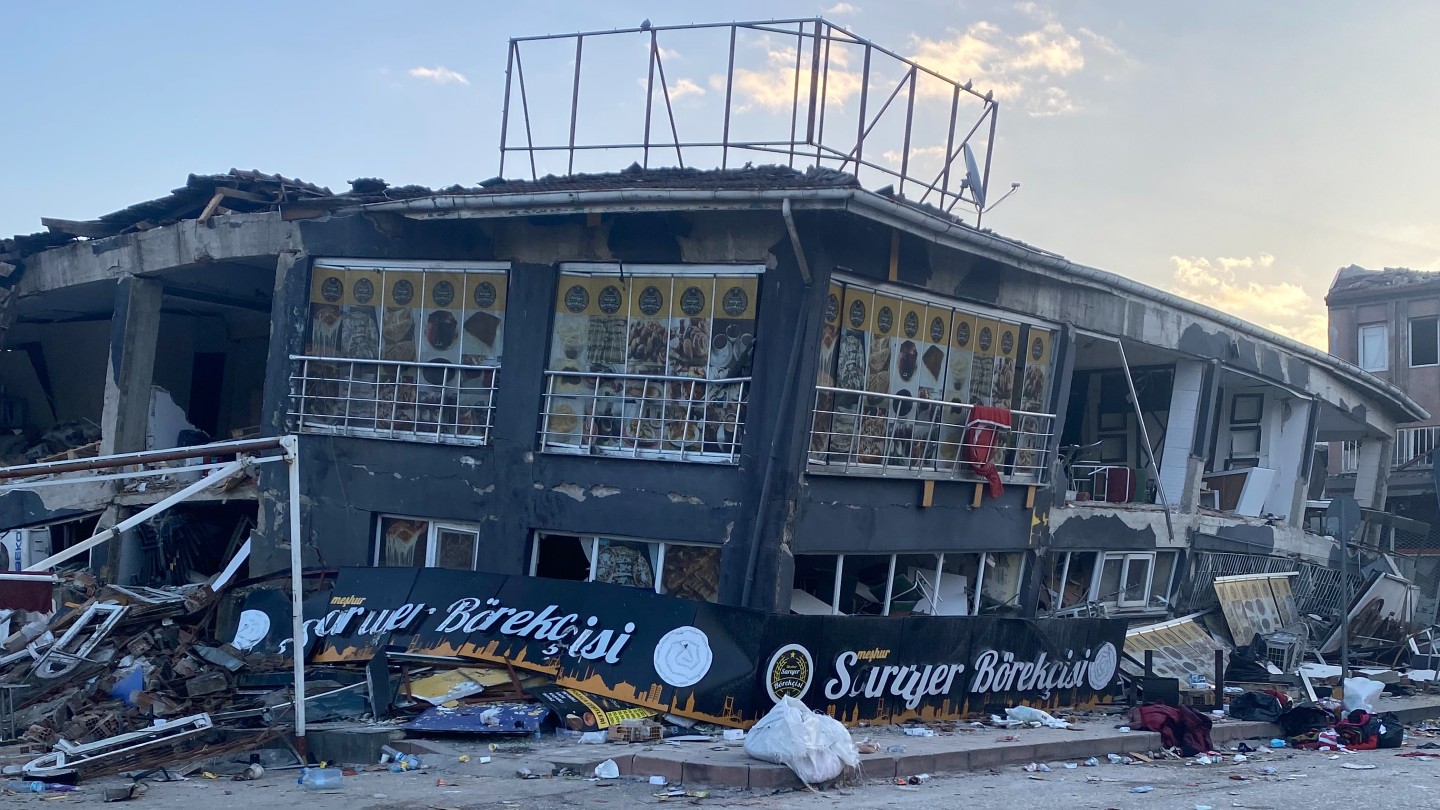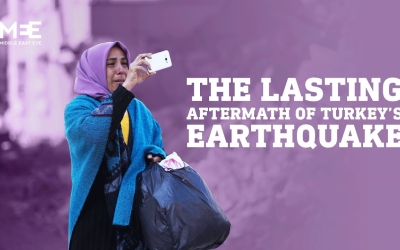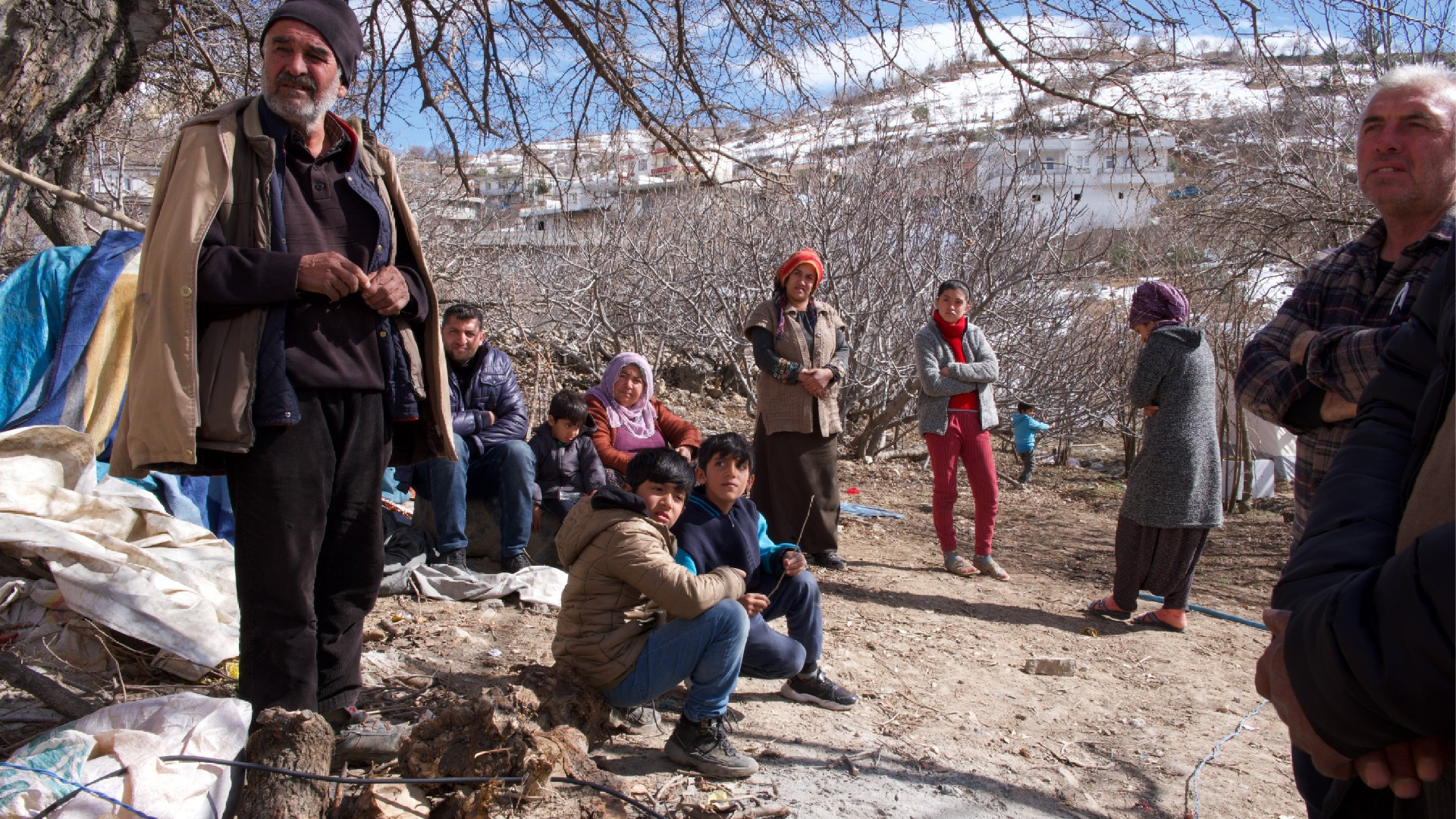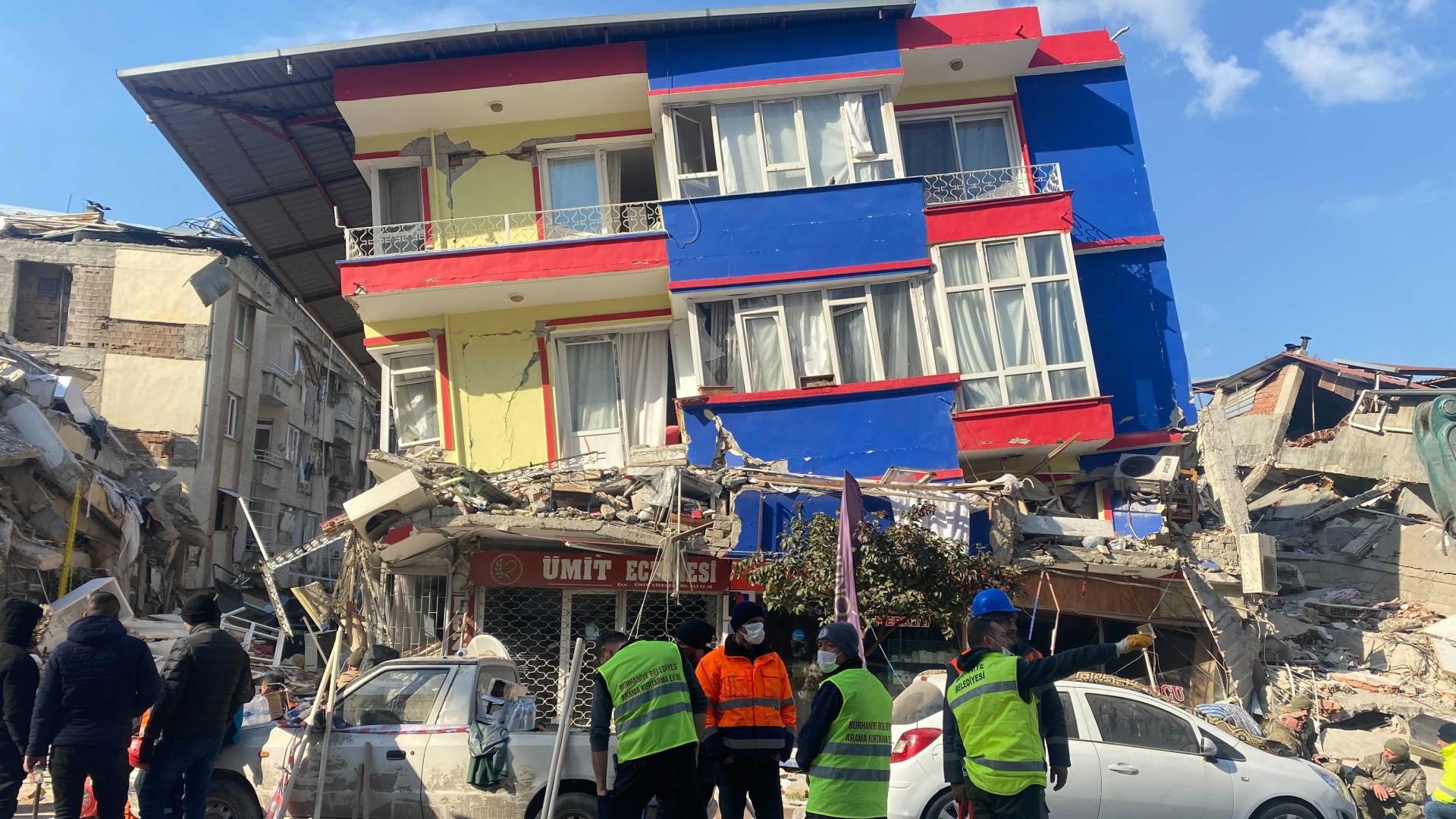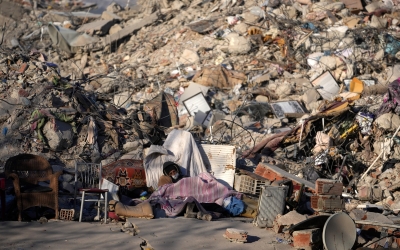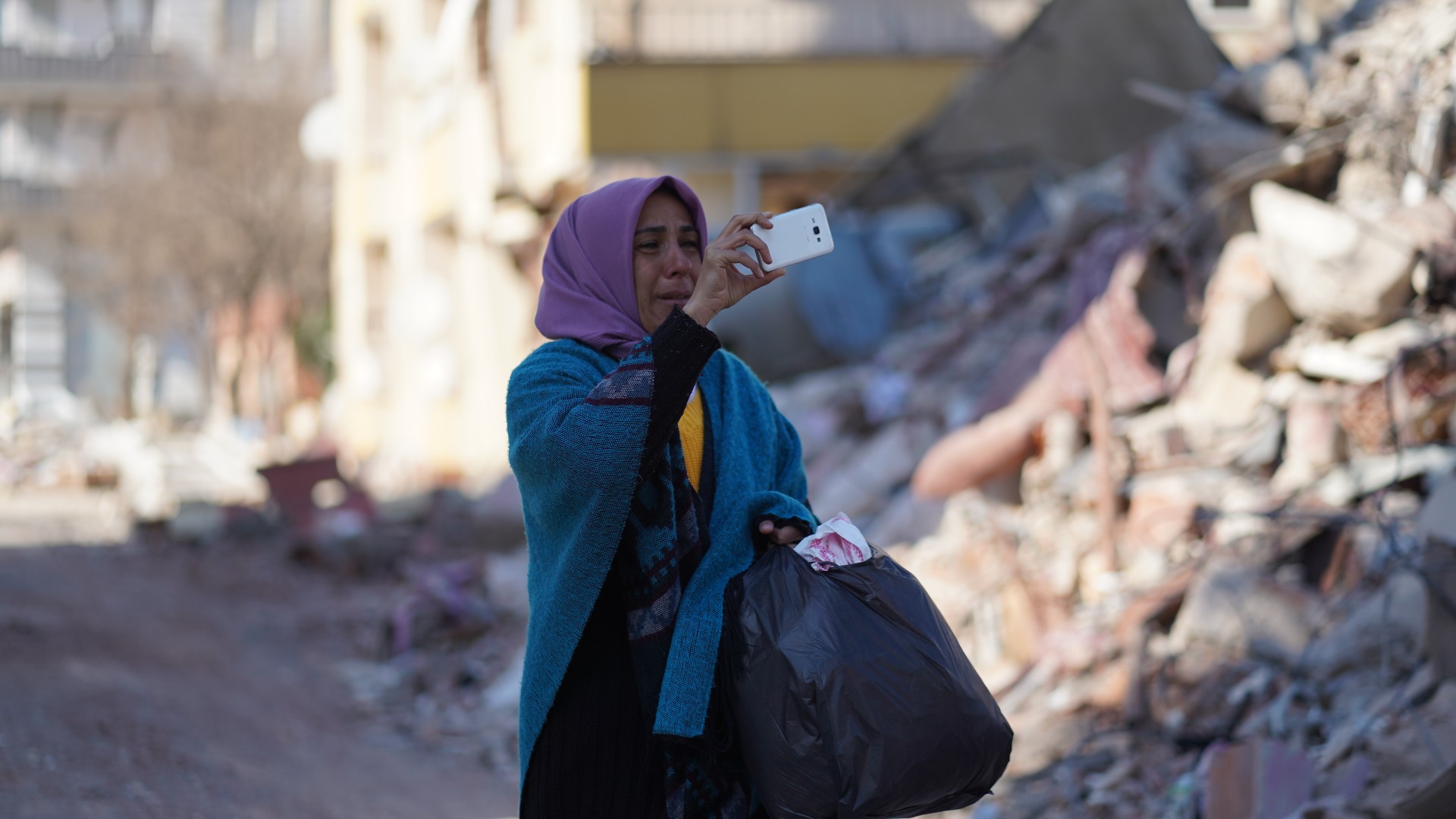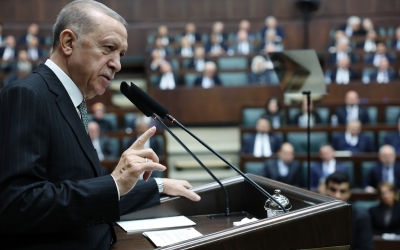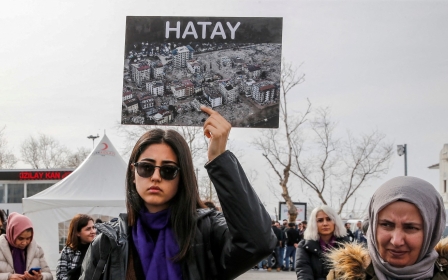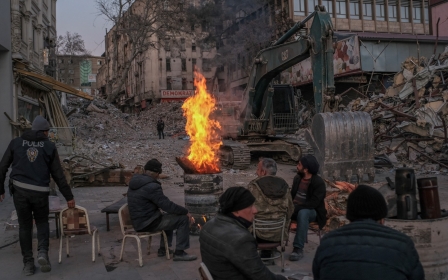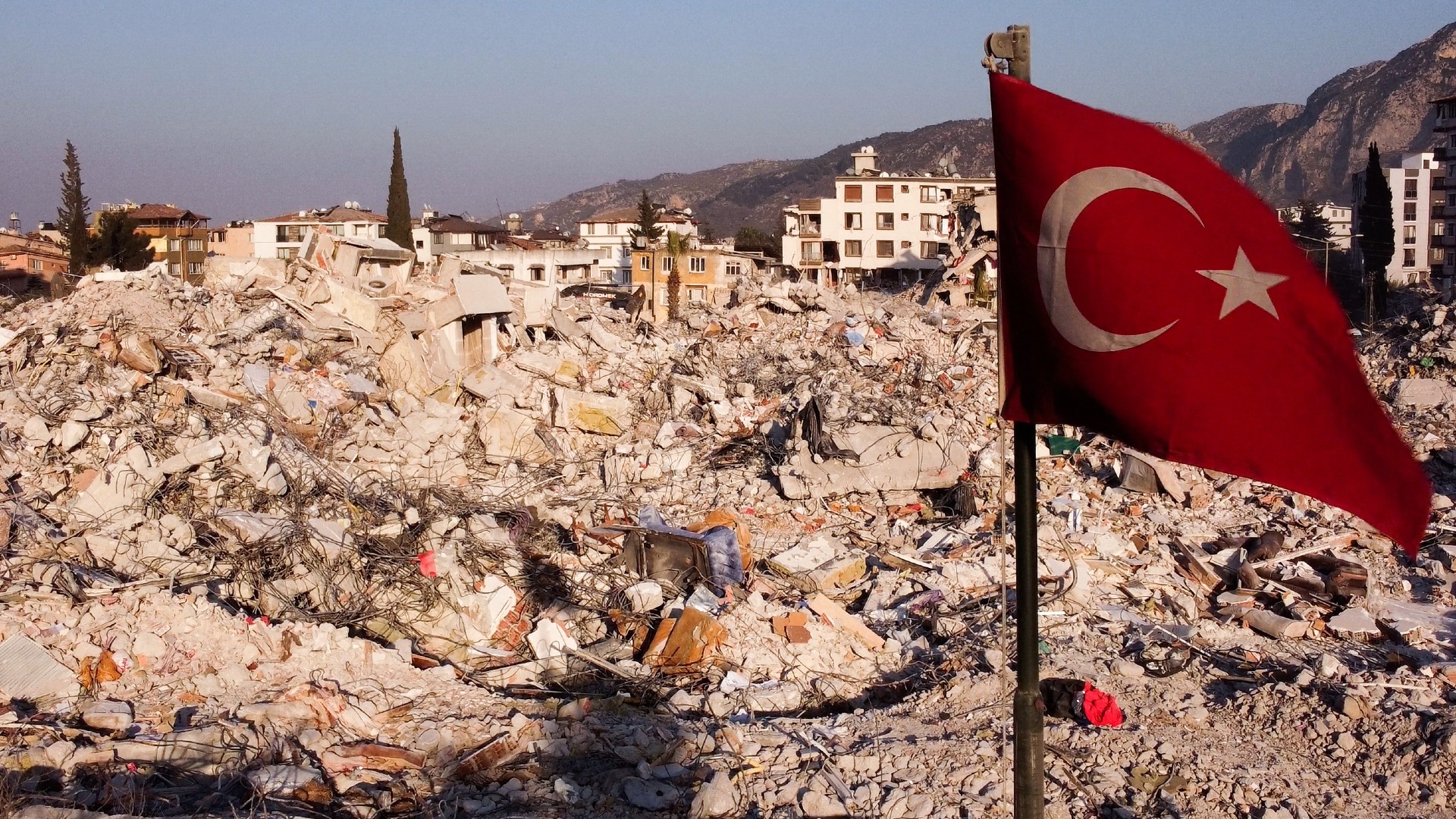
What went wrong with Turkey's earthquake response?
Inside the headquarters of the Turkish disaster management agency known as Afad, the mood was bristling with tension.
Within an hour of the 7.7 magnitude earthquake striking the southern province of Kahramanmaras, senior officials and ministers knew the scale of the devastation was beyond the government's response capabilities.
Damage reports were collected and governorships notified.
Ankara sent messages to every provincial administration requesting that search-and-rescue teams be dispatched to the quake-affected areas.
Turkish Interior Minister Suleyman Soylu hastily declared a Level 4 disaster and appealed for international help.
New MEE newsletter: Jerusalem Dispatch
Sign up to get the latest insights and analysis on Israel-Palestine, alongside Turkey Unpacked and other MEE newsletters
"The immediate call for foreign aid was the ultimate confirmation that this was something beyond our planning and expectation," a senior Turkish official, directly involved with the emergency response, told Middle East Eye.
"We didn't think twice about it. Less than an hour had passed after the powerful quake and we knew that this was it."
So began one of the most dramatic days Turkey has ever known.
Soylu and the other ministers rushed to the earthquake-hit cities of Malatya, Hatay, Adiyaman, Gaziantep, Adana, Kilis, Sanliurfa and Osmaniye, an area more than 350,000 square kilometres in size.
Vice President Fuat Oktay stayed in Ankara and took control of Afad, the agency he formed and ran between 2012-2016.
Despite the presence of ministers in cities such as Adiyaman and Hatay, the help people were looking for didn’t come during these first crucial 48 hours.
Videos of survivors pleading for help went viral as volunteers shared thousands of addresses where victims lay buried under mounds of concrete and twisted metal.
The Turkish state, throughout all of this, looked like a helpless bystander.
"We knew all along that a big one would hit Maras," the official said.
'This was beyond our capacity'
Nearly four years ago Afad conducted a three-day-long earthquake drill in Kahramanmaras. In a 20-minute long promo-video, emergency response teams could be seen rushing to help survivors following a staged 7.5 magnitude quake.
Twenty-six neighbouring provinces sent rescue teams. Helicopters air-lifted victims. Mobile hospitals and food trucks delivered services. There was even a police response team to keep the relatives of the victims away from the affected areas.
'The disaster response plan was created on the assumption that we could communicate with people on the ground'
- Source close to Interior Ministry
The drill was based on an assumption that an earthquake could strike Malatya, Gaziantep as well as Adiyaman. It was even predicted that a hotel named Saffron in Maras would collapse.
When the earthquake actually struck on 6 February, the Saffron did indeed collapse.
"Some local administrators at the time thought [the drill] was a success," another Turkish official, who was present in Maras that day, told MEE.
"But it was clear to me back then that it was just another task for them [without any great importance]. They didn't really think it through."
Officials and sources close to the government have refused to say why the government's response to the 6 February quake was so slow.
Since the tragedy, officials have stuck to the following talking points: The airports in Hatay and Maras were severely damaged; the roads leading to Adiyaman, Maras and Hatay were either blocked due to the quake or a snowstorm; the disaster response teams in the disaster zone themselves were earthquake victims and the area was too large and there weren't enough people to address victims’ needs.
"Everyone did their best in Afad, but this was beyond our capacity," the senior official said.
"At one point people started to silently cry at the headquarters because we were receiving thousands of messages and calls every hour but we couldn’t help them."
Others, however, point out other factors: infighting within Afad, incapable members within the disaster response team, and a lack of real preparation.
"The deep disagreement between Soylu and Oktay over Afad was on full display that night," one source familiar with the issue told MEE.
"They couldn't coordinate the disaster response well."
Disagreements emerged
Oktay, an academic specialising in industrial engineering and business management, was lauded as a talented bureaucrat when he led Afad.
Under his leadership, Afad has become a powerful disaster management agency modelled after its US counterpart, the Federal Emergency Management Agency (Fema).
He led efforts to establish a series of refugee camps for Syrians, which were deemed "perfect" by some observers. The agency received worldwide praise, including from UN bodies, over the temporary shelter projects for Syrian refugees.
As Turkey transformed from a parliamentary political order to a presidential one, Oktay was picked as vice president by President Recep Tayyip Erdogan, with an aim to use his bureaucratic and engineering experience to tidy the new constitutional order.
Then the disagreements emerged.
Oktay wanted to keep Afad as an independent agency directly responsible to the president and he wanted to assign a public servant who had experience in disaster management.
"Afad, as a separate agency, could coordinate the disaster response as the ultimate authority, which could accelerate the workflow," the senior Turkish official said.
Soylu, on the other hand, wanted to have Afad as part of the interior ministry. He won the argument and redesigned Afad, using his supporters, governors and others to better cooperate with the provincial administrations.
He eventually assigned a governor, someone who didn't profess any disaster experience, as the head of Afad in 2021.
"Soylu wanted to have Afad under his authority because it is the only non-security element within the ministry that could touch people," the senior official said.
"It has an open budget during emergencies which could create a direct impact."
The sources add that because Afad managed smaller earthquakes fairly well in Izmir and Erzincan in 2020, there was a perception within the agency that it could do fairly well during a big disaster.
A flawed plan
However an Afad impact analysis following a small-scale tremor in Duzce in December indicated that their emergency response was prone to errors and rife with miscommunication, even to the point that coordination headquarters had not been established to command the officials and volunteers.
The report added that the disaster response wasn't in line with Turkey's official disaster response plan: "The unpreparedness of the disaster groups, the wrong location of the Afad HQ, and the inadequacy of inter-institutional cooperation and coordination prevented a healthy management process," it said.
A source close to the interior ministry said it was wrong to pick Oktay as the coordinator in Ankara since he was no longer familiar with Afad’s structure as well as Turkey's disaster response plan.
"All the leadership within the ministry was dispatched to the disaster zone, which created disarray within Afad," the person said. "Oktay had good intentions but he would constantly ask for meetings and try to understand the system."
A person close to Oktay said the vice president coordinated the efforts as tasked by the government and still manages the fallout from the earthquake to his best capabilities.
But others said governors and district governors wouldn't recognise Afad's authority, which created an additional set of bureaucracy during the first 48 hours, giving credit to Oktay's initial idea to empower Afad as a separate agency.
People close to Soylu have acknowledged the shortcomings. "We planned for five cities around Maras, but the earthquake affected ten cities," the source said.
"Turkey's disaster response plan collapsed because it tells you to ask help from neighbouring provinces, which were all impacted; no help was coming."
The criticism focused on two provinces, Hatay and Adiyaman. Multiple officials and sources told MEE that Adiyaman Governor Mahmut Cuhadar misinformed Afad about the damage in the city which delayed the response.
MEE reached out to Cuhadar's office for comment but did not receive a response by time of publication.
Meanwhile, the case for Hatay is more complex. "The disaster response plan was created on the assumption that we could communicate with people on the ground," the person close to the ministry said.
"But communication channels were down in Hatay and in some other provinces. We expected that there would be no phone calls but service providers promised us that the internet infrastructure would be intact."
Musk, Twitter and Starlink
With the quake-affected areas lacking internet access, Turks from across the political spectrum called on Elon Musk to provide the Starlink system to Turkey.
Starlink provides broadband internet using thousands of satellites orbiting the Earth, rather than fibre-optic cables.
'Officials were afraid that they wouldn't be able to control and restrict the internet connection provided by Starlink in the future'
- Source familiar with the Ministry of Transport and Infrastructure
"Starlink is not approved by the Turkish government yet. SpaceX can send as soon as approved," Musk said on the day of the disaster.
Bloomberg News later reported that Turkey had rejected Musk's offer on the grounds of having "enough satellite capacity".
Yet, the person close to the interior ministry said Starlink could have helped re-establish the internet connection on the ground for the first four to five days, helping save lives.
A separate source, familiar with the Ministry of Transport and Infrastructure's decision to reject Musk's offer, said: "Officials were afraid that they wouldn't be able to control and restrict the internet connection provided by Starlink in the future.
"You cannot censor the internet when it is directly provided by satellites," the source added.
The senior Turkish official said there was a simple and rational reason that explains why they failed in the first 48 hours: "We simply don’t have the numbers to deal with it. It wasn’t manageable under the circumstances," the official said.
"There are more than 30,000 buildings that collapsed in ten cities. We only have 2,500 search-and-rescue personnel, and 2,900 search-and-rescue volunteer personnel which we trained. You need at least 20 personnel per building."
Ismail Ozan Cilgin, an expert on disaster management who also joined rescue efforts in quake-hit Iskenderun, says Afad's main aim to be the sole coordinator for the earthquake response was fatal and wrong.
"Everyone expected their command which didn’t come through," Cilgin said.
"The disaster response must be managed locally as every other developed country does. You have to engage all the local actors from universities to NGOs, to the private sector, and integrate them. They shouldn't wait for Afad's orders in case of a disaster. They should know what to do and act without waiting."
Cilgin said Turkey's Disaster Response Plan (TAMP) looked great on paper, and even considered the smallest details like which agency would find coffins for non-Muslim residents in a given province during a disaster.
"There are 28 support groups according to the response plan, which should have been coordinated by Afad's local branch, but everyone waited for orders from Ankara," he added.
"You cannot manage this kind of large disaster from Ankara. The system and the operations on the ground get stuck."
The official also defended Afad, saying its local teams in cities such as Hatay, Adiyaman and Maras were themselves victims of the earthquake, and Ankara couldn't effectively delegate because many were unaccounted for.
Where was the military?
As Turkey was reckoning with the mounting death toll, questions began to emerge over why the government hadn’t actively utilised the military.
Afad's Disaster Response Plan, for one, doesn’t include the military among the support groups that are needed on the ground in case of an emergency.
"Afad could use military infrastructure, namely vehicles and equipment such as choppers and others, that’s why we didn’t include them in the plan," said the senior Turkish official.
"The military actively used its air force to deliver aid and dispatched ships to provide medical assistance."
The official said that some within Afad called their superiors in Ankara to immediately dispatch the military, but their requests were ignored.
The military did deploy its search-and-rescue group, the Humanitarian Aid Brigade, to the disaster zone in the first few days following the quake, but the contingent doesn’t have more than 400 members.
Generals guarding garrisons in cities like Maras and Adiyaman ordered their troops to help the survivors without waiting for the official orders in the first 24 hours, other sources said.
A government insider said the Turkish Defence Minister Hulusi Akar actually wanted to spearhead the emergency operations in the heavily damaged province of Hatay by using the military but Soylu refused, saying that it could give the impression that the state wasn’t functioning.
The military didn’t become visible until much later when the government acknowledged the devastation.
On the third day since the earthquake, 8 February, Erdogan visited the disaster areas but wasn't well received by many members of the public after he threatened people who allegedly disseminated disinformation just 24 hours earlier.
"We keep a book of you and will come for you when the time is right," he had said, visibly angry.
The government insider said that as Erdogan descended into Maras and Hatay from the air, he realised that the devastation was much greater than he was told.
"Erdogan wasn’t aware because Afad itself wasn’t able to get the full picture," the government insider added.
Erdogan met the ministers following the tour, and berated them for the situation. "How come a building which was built three years ago could collapse?" he reportedly asked, according to the insider.
Prioritising construction
When Erdogan came to power in 2003, Turkey was recovering from a severe financial crisis and two earthquakes that severely damaged the country’s economic hub of Marmara.
Pushing for reforms to reposition Turkey towards the European Union, Erdogan also made large investments in the country’s infrastructure, namely, highways, trains and airports.
The construction sector boomed as exports increased, bringing production as well as the per capita income to levels never seen before at more than $12,000 in 2013.
However Erdogan's infrastructure-based economic policies gave an outsized role to construction industries, increasing the percentage of the sector from 4.5 percent of GDP in 2001 to 8.5 percent in 2017.
Guldem Atabay, a Turkish economist, told MEE that Erdogan chose the easiest path for economic growth and employment.
"Transforming the country for global competition, encouraging innovation, and creating a long-term and sustainable development that could compete in high-tech with countries like the US is really hard," she told MEE.
"The government made a choice in 2008 to focus on building infrastructure for housing and establishing new cities, a deliberate attempt to spur growth as urbanisation continued."
Atabay said the construction boom was a political and economic boon for Erdogan, helping solidify the ruling AK Party's rule.
Erdogan's so-called mega projects and preference for awarding government tenders to five large construction companies, which the opposition has dubbed as "the mob of five", damaged his reputation among some segments of society.
Throughout his rule, Erdogan campaigned on plans to demolish shoddy apartments and homes that were built before 1999 when the deadly quakes hit provinces close to Istanbul.
The subsequent governments, including Erdogan's, changed legislation and imposed more rules and inspections to increase the quality of the buildings.
However, the Turkish Chamber of Civil Engineers has said that around 20 percent of the newly constructed buildings in the earthquake zone collapsed, despite being built after the regulatory changes.
Many blame the Turkish government’s zoning amnesty in 2018 that forgave faults in three million buildings that violated regulations.
Mustafa Ozturk, the former undersecretary of the Ministry of Urbanisation and Environment between 2014-2018, said parliament had passed the zoning amnesty legislation with the support of the opposition.
"What we proposed at the time as the ministry was to mandate a building and foundation inspection and ensure that the unit could withstand the earthquake as a precondition," Ozturk said. "But the government didn’t want that, thinking that it wouldn’t generate as much income because many buildings wouldn’t have been able to be registered."
The zoning amnesty generated some 25 billion Turkish lira for the government, which was more than $5bn in 2019.
Zoning amnesties
Zoning amnesties have been regularly issued since the 1960s, but the 2018 amnesty is considered to be one of the largest.
Ozturk said he believes many of the buildings that collapsed in Hatay did so not because they were granted amnesty, but because they were built on poor ground.
Analysts say most of the buildings in Hatay's Antakya were built near the river base, where alluvial deposits create poor conditions for building foundations.
Under the zoning amnesty scheme, illegally constructed buildings are legitimised by a fee paid to the government without any earthquake risk screening.
'There is political interference in the plans from the lowest ranking politicians to the ones who hold elected positions'
- Mustafa Ozturk, former minister
Tezcan Karakus Candan, the chairman of Chamber of Architects in Ankara, said the amnesty shields the government from any responsibility in case of an earthquake; the law specifically said it is the duty of the registrar to make sure his or her building is up to earthquake codes.
Coincidentally, Turkey's parliament was scheduled to discuss another zoning amnesty on 6 February, the day the twin earthquakes struck.
The inspection of the new constructions is also a matter of debate. Many in the country point out that private companies carry out inspections with construction firms paying them for the task.
Ozturk said the government changed the law last year to create a pool of companies that randomly assign inspection companies to each project, therefore decreasing the chances of corruption.
"However we failed to establish a system of payment pool where the inspection companies are paid by the fees collected from the construction companies," he said.
"Imagine, the construction owners still directly pay the inspectors, susceptible to the dodgy work."
Candan said inspections need to be carried out by public institutions rather than private companies, and she highlighted the case of five out of 25 inspection companies in Hatay being partly owned by the very construction firms they need to oversee.
"This is a cogwheel of rent that goes beyond the inspections," Candan said.
"There are capital owners, politicians, provincial assembly members, architects, engineers, builders and others. They are all part of one rent distribution, and act together in numerous construction projects."
Ozturk, the former undersecretary, agreed. He said that various city master plans have constantly been changed to create more rent for political interest groups and certain businessmen.
"There is political interference in the plans from the lowest-ranking politicians to the ones who hold elected positions," he said. "I literally shouted and came against the construction of Hatay airport on a dried lake. No one listened. And it got severely damaged during the earthquake."
A case that has repeatedly been cited lately is that of the Seyri Istanbul residential complex in Malatya city. Advertised as an earthquake-resistant multi-storey tower block, units were sold for millions of Turkish lira in recent years.
"How could this happen to a three-year-old building?" asked an earthquake survivor who inspected the ruins of the Seyri Istanbul building while covered with a blanket in a now viral video.
"The construction material used in this building could only be used for a two-storey building. Even the irons are illegal."
MEE reached out to the construction firm for comment but did not receive a response by time of publication.
'No more rubble. No more deaths'
Bahadir Ozgur, a Turkish journalist who writes about corruption for the left-leaning Birgun daily, said there was a network of bureaucrats, politicians and builders that benefited from the construction boom.
"Why are there so many construction business owners within the municipal assemblies?" he asked. "I counted 500 construction firms registered in Hatay, which is supposed to be an agricultural province."
Citing the case of the Seyri Istanbul building, Ozgur said Muharrem Poyraz, a constructor allegedly close to the ruling Justice and Development Party (AKP), also served as a former local head of the pro-government Independent Industrialists and Businessmen's Association (MUSIAD).
"He has been emboldened by his political ties and built many buildings in the city, where you see lots of new buildings that collapsed because they were constructed on farmland," he added. Poyraz is currently under arrest.
Candan, the chairman of the Chamber of Architects in Ankara, said greed doesn't discriminate, as she was fired from her teaching role at the university after claiming that Sinan Aygun, a former opposition party CHP representative, built a complex called Togo Towers in Ankara in violation of building codes.
Atabay made the bold claim that nearly everyone in the country’s political sphere had or is trying to benefit from the zoning amnesties.
"The AKP encouraged urbanisation, larger municipalities and construction, but everyone is also very interested in getting zoning permits for their farmlands," she said.
"Political life in Turkey has literally been fed by the construction sector and its growth since the 1950s."
A month after poor building practices were brutally exposed in the 6 February earthquake, the senior Turkish official said the country needed to come forward with a way to prevent another catastrophe from happening.
"We know that an earthquake in Istanbul is very likely in the next seven years," the official said.
"There are detailed search and rescue plans for Istanbul’s every district, which would come from the rest of the country."
The official added that shoddy buildings needed to be demolished, and a better inspection system had to be put in place, but this work needed to be done by lawmakers and politicians rather than emergency aid workers.
Cilgin, the disaster management expert, agreed, adding that anyone who would now focus on training more search and rescue teams wouldn’t be doing a good service to the country.
"We need to make sure with everything we do that we have buildings that won't collapse during the next earthquake in Turkey," he said.
"No more rubble. No more deaths."
Middle East Eye delivers independent and unrivalled coverage and analysis of the Middle East, North Africa and beyond. To learn more about republishing this content and the associated fees, please fill out this form. More about MEE can be found here.


